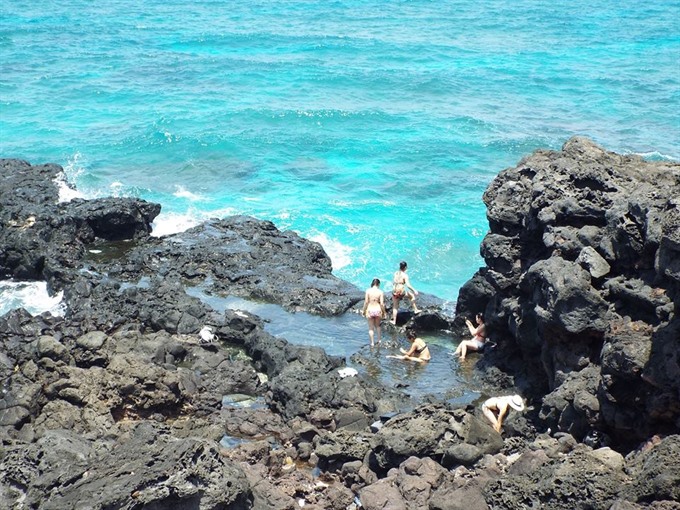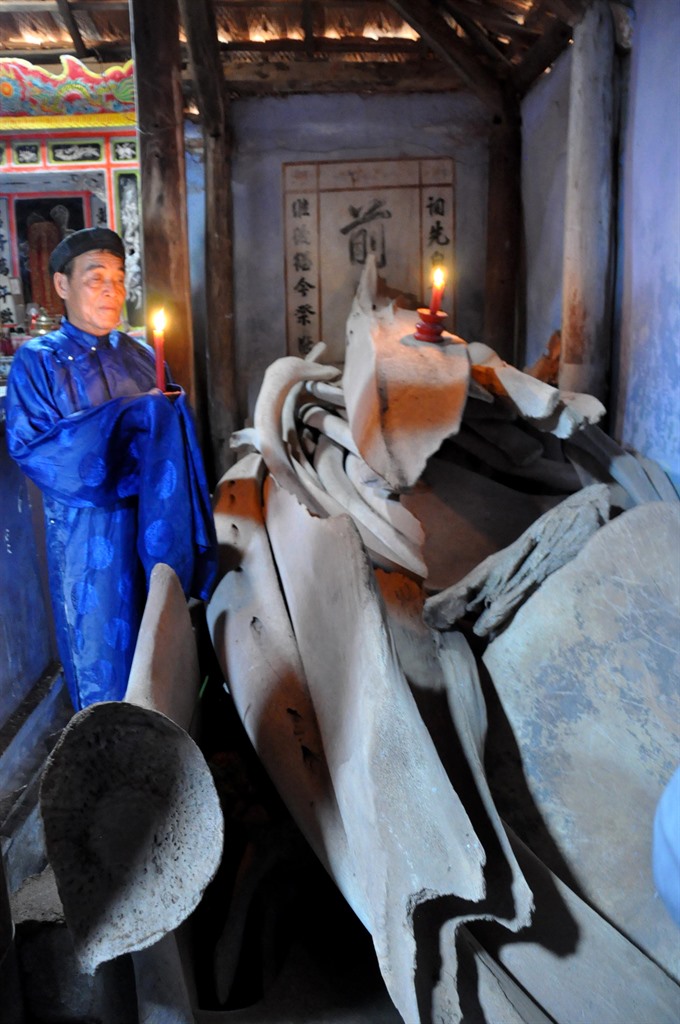 Life & Style
Life & Style

The central island district of Lý Sơn plans to restore a whale skeleton and an exhibition centre for whale skeletons with an investment of VNĐ10 billion (US$442.477).
 |
| Rocks formed by volcanoes 30 million years ago lure travellers. — VNS Photo Chu Mạnh Trinh |
QUẢNG NGÃI — The central island district of Lý Sơn plans to restore a whale skeleton and an exhibition centre for whale skeletons with an investment of VNĐ10 billion (US$442.477).
Vice Chairwoman of the district’s People’s Committee, Phạm Thị Hương, told Việt Nam News the restoration project will be built at Lăng Tân Temple (Temple of the Whale) in the commune of An Vĩnh on Lý Sơn Island.
According to elderly residents of the commune, the 24m-long skeleton - believed the longest such skeleton found in Việt Nam - was buried in the fishing village of An Hải nearly 300 years ago.
Islanders said the whale was found dead on the beach, but was too heavy to carry to burial inland and fishermen dug a big hole to bury it on the beach. They surmised that the whale had died off Hoàng Sa (Paracels) Island of Việt Nam and drifted ashore on Lý Son Island.
Subsequently, local fishermen excavated the skeleton and placed it in a temple, where it was an object of worship. The Lăng Tân Temple has been recognised as a national historical site.
However, some parts of the skeleton were damaged over the years and not repaired due to lack of restoration technology.
The district’s vice chairwoman said another whale skeleton was also found in the area, and the province will approve a supplementary fund of VNĐ4.1 billion ($181,415) for its restoration.
Whale temples, known as Lăng Ông, are often seen in fishing villages, reflecting an old fishermen’s belief in the whale’s power to guard their lives at sea.
Fishermen also express respect for the giant ocean mammals when they find it dead, and perform a respectful mourning ceremony. They build a bamboo basket to carry it to a final resting place in a temple. They believe this dignified burial and worship confer luck on all the fishermen’s descendants, who still make their living from the sea. — VNS
Box:
Lý Sơn Island, 30km off the coast of the central province of Quảng Ngãi, is a tranquil destination with 21,000 inhabitants, most of whom make their living from farming garlic and spring onions, and fishing.
It was formed by five mountains, of which four are dormant volcanoes.
Centuries-old houses have been preserved, as has Âm Linh Pagoda, built to worship the souls of sailors who died on long voyages.
A local museum displays over 200 ancient documents and 100 exhibits that prove that Hoàng Sa and Trường Sa (Spratly) Islands belong to Việt Nam.
In 2013, the Ministry of Culture, Sports and Tourism recognised the islands’ Hoàng Sa fest as an intangible cultural heritage.
Observed for hundreds of years by families on the islands, the festival pays tribute to local men who enlisted in the Hoàng Sa Flotilla to patrol the Hoàng Sa and Trường Sa archipelagos in order to mine resources and defend the nation’s sovereignty over the area.
In previous centuries, the An Vĩnh communal house served as a recruitment centre for soldiers to protect the Hoàng Sa and Trường Sa archipelagos from the Nguyễn Dynasty in the 17th century. — VNS
 |
| Fishing ships dock at Lý Sơn Island. — VNS Photo Công Thành |
 |
| A whale skeleton in a temple in An Vĩnh Commune on Lý Sơn Island, 30km off the coast of Quảng Ngãi Province. — VNS Photo Lê Phước Như Ngọc |




